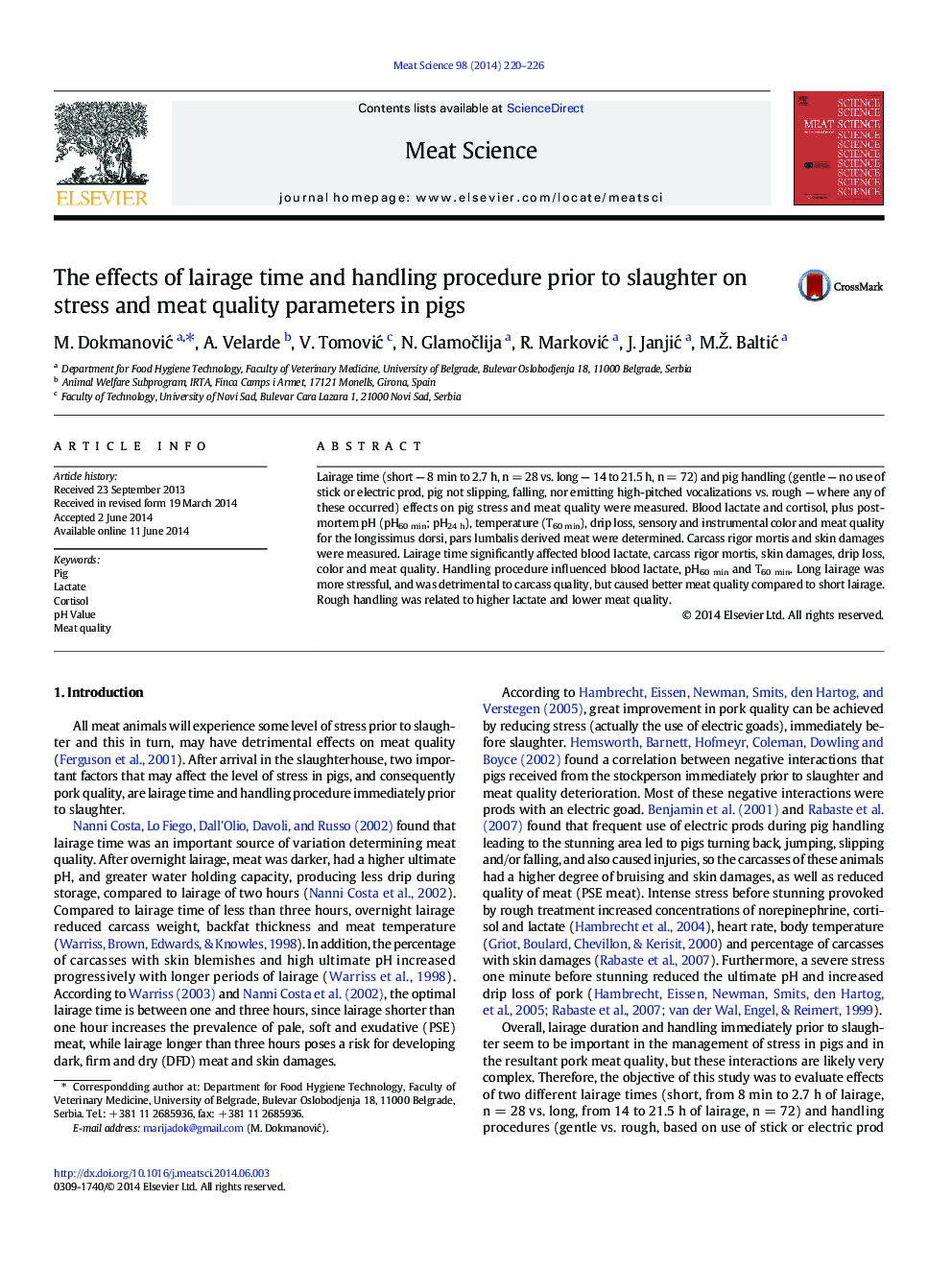| Article ID | Journal | Published Year | Pages | File Type |
|---|---|---|---|---|
| 2449965 | Meat Science | 2014 | 7 Pages |
•Effects of lairage time and handling on pig stress and meat quality were measured.•Blood lactate and cortisol, pH, temperature, drip loss and color were determined.•Lairage time and handling had significant effects on stress and meat quality.•Longer lairage improved meat quality, but was more stressful to pigs.•Rough handling was more stressful to pigs and deteriorated meat quality.
Lairage time (short — 8 min to 2.7 h, n = 28 vs. long — 14 to 21.5 h, n = 72) and pig handling (gentle — no use of stick or electric prod, pig not slipping, falling, nor emitting high-pitched vocalizations vs. rough — where any of these occurred) effects on pig stress and meat quality were measured. Blood lactate and cortisol, plus post-mortem pH (pH60 min; pH24 h), temperature (T60 min), drip loss, sensory and instrumental color and meat quality for the longissimus dorsi, pars lumbalis derived meat were determined. Carcass rigor mortis and skin damages were measured. Lairage time significantly affected blood lactate, carcass rigor mortis, skin damages, drip loss, color and meat quality. Handling procedure influenced blood lactate, pH60 min and T60 min. Long lairage was more stressful, and was detrimental to carcass quality, but caused better meat quality compared to short lairage. Rough handling was related to higher lactate and lower meat quality.
